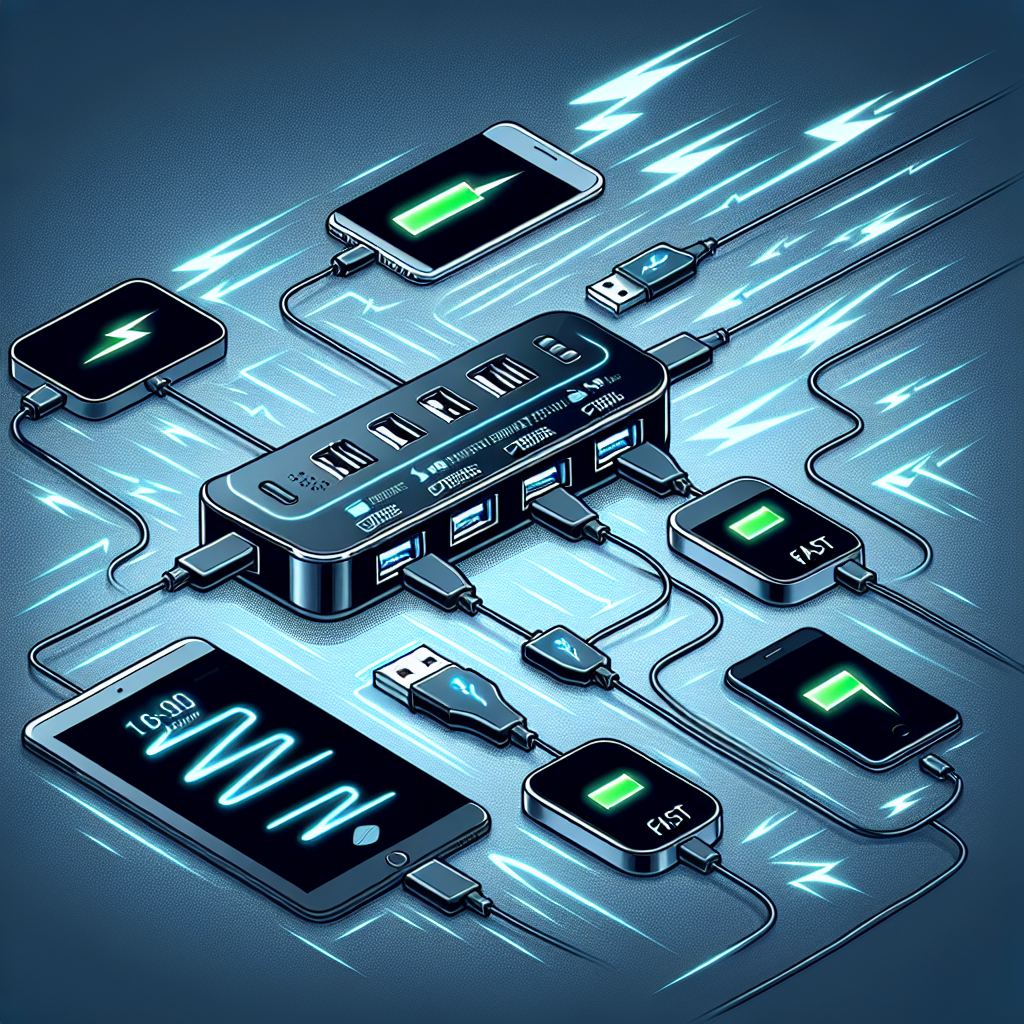
Do USB Splitters Support Fast Charging?
Understanding USB Splitters and Fast Charging
In an era where multiple devices require charging simultaneously, USB splitters offer a solution for users seeking convenience without sacrificing functionality. However, a common question arises: do USB splitters support fast charging? To answer this, we must first understand what USB splitters are and how fast charging technology works.
What Is a USB Splitter?
A USB splitter, also known as a USB hub, is a device that enables multiple USB devices to connect to a single USB port. This can be particularly useful for charging multiple devices simultaneously or connecting various peripherals to a single computer. There are different types of USB splitters, including:
- Passive Splitters: These devices divide the power and data from a single USB port into two or more output ports without any additional power source.
- Powered Splitters: Equipped with an external power source, these splitters can provide adequate power to all connected devices, making them suitable for charging.
Fast Charging Explained
Fast charging refers to technology that allows devices to recharge at a rate significantly quicker than standard charging. This is achieved through various methods, including:
- Increased Voltage: By supplying a higher voltage, devices can charge faster.
- Higher Current: Increasing the current provided to the device also improves charging speeds.
Common fast charging standards include Quick Charge (QC) by Qualcomm and Power Delivery (PD), among others. These technologies require specific compatibility between the charger, cable, and device.
Can USB Splitters Support Fast Charging?
Whether a USB splitter can support fast charging depends on several factors:
Type of Splitter
As mentioned earlier, powered USB splitters are more likely to support fast charging compared to passive ones. Powered splitters provide additional power that can accommodate fast charging requirements.
USB Specifications
Many splitters are designed based on specific USB standards:
| USB Version | Max Power Output | Fast Charging Capability |
|---|---|---|
| USB 2.0 | 2.5W (5V @ 0.5A) | No |
| USB 3.0 | 4.5W (5V @ 0.9A) | Limited |
| USB 3.1 | 15W (5V @ 3A) | Yes |
| USB Power Delivery | Up to 100W | Yes |
Device Compatibility
The devices being charged also play a crucial role. For a USB splitter to utilize fast charging capabilities, the connected devices must also support fast charging technology. While a compatible splitter can deliver the necessary power, the device must be able to accept it.
Uses of USB Splitters
USB splitters have a variety of uses, including:
- Charging Multiple Devices: Easily charge phones, tablets, and other gadgets simultaneously.
- Connecting Peripherals: Connect multiple peripherals like mice, keyboards, and printers to a computer.
- Data Transfer: Facilitate data transfer between devices without needing multiple ports on the host computer.
Choosing the Right USB Splitter for Fast Charging
Selecting a USB splitter that supports fast charging involves considering several factors:
1. Check for Powered Splitters
Opt for a powered USB splitter if you plan on charging multiple devices simultaneously, ensuring adequate power is available.
2. Look for USB Specification
Select a splitter that supports USB 3.1 or higher, as they generally provide better power output and fast charging capabilities.
3. Verify Device Compatibility
Ensure that your devices support fast charging and are compatible with the splitter’s capabilities.
Conclusion
In summary, USB splitters can support fast charging, but it’s essential to choose the right type of splitter and ensure compatibility with the devices in use. Powered USB splitters, especially those designed with modern USB specifications, are generally suitable for fast charging multiple devices. By understanding the distinctions between different types of USB splitters and the requirements for fast charging, users can make informed decisions to keep all their devices charged efficiently.
